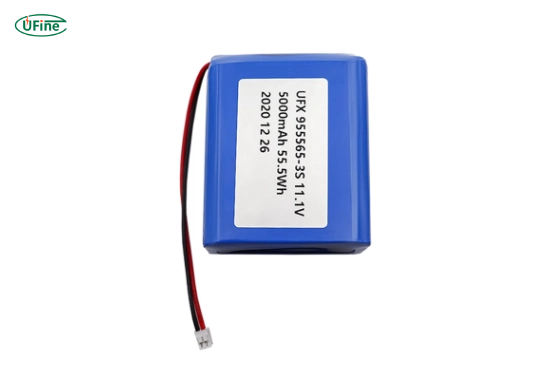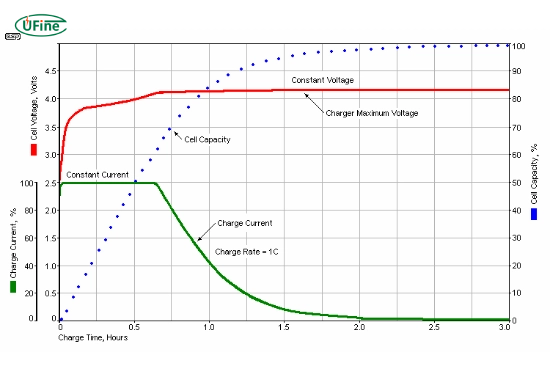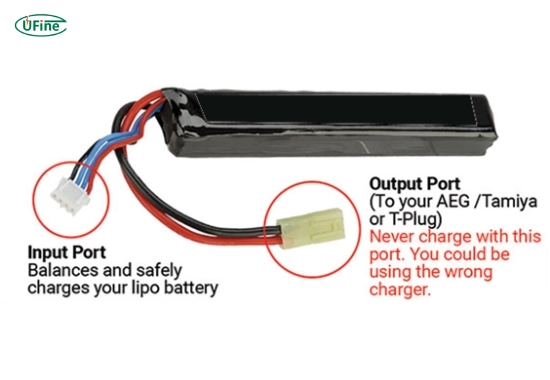
- Part 1. What is an 11.1V LiPo battery?
- Part 2. Why is safe charging essential for LiPo batteries?
- Part 3. What type of charger should you use for an 11.1V LiPo battery?
- Part 4. How do you determine the correct charging rate?
- Part 5. How do you connect your 11.1V LiPo battery for charging?
- Part 6. What is balance charging and why is it important?
- Part 7. Why is a fire-resistant charging mat important?
- Part 8. What other safety tools should you use when charging?
- Part 9. Where should you charge your 11.1V LiPo batteries?
- Part 10. How should you store 11.1V LiPo batteries?
- Part 11. What are signs of a failing or dangerous LiPo battery?
- Part 12. FAQs about 11.1V LiPo battery charger
How do you safely charge an 11.1V LiPo battery?
If you are using an 11.1V LiPo battery charger, safety should always come first. LiPo batteries are powerful and compact, making them very popular in drones, RC cars, airsoft guns, and other electronic hobbies. However, these same batteries can pose serious risks when charged improperly. Overcharging, physical damage, or incorrect settings can lead to swelling, fire, or even explosions.
This guide will walk you through everything you need to know about safely charging your 11.1V LiPo battery. You will learn about proper charging rates, essential safety tools, common charging mistakes, and how to set up your charging station correctly. This article is written in a clear and conversational tone, making it easy for anyone to follow, even if you are new to LiPo batteries.
Part 1. What is an 11.1V LiPo battery?
An 11.1V LiPo battery is a lithium polymer battery that contains three cells connected in series. Each cell has a nominal voltage of 3.7 volts, so three cells combined give you 11.1 volts in total. These batteries are often labeled as “3S,” which stands for “3 cells in Series.”
LiPo batteries are widely used due to their high energy density, lightweight design, and ability to deliver high current. This makes them ideal for high-performance applications like racing drones, electric vehicles, and robotics.
However, LiPo batteries are also sensitive. They require precise charging methods, careful handling, and proper storage. Failing to follow safety protocols can lead to fires or permanent battery damage.
Part 2. Why is safe charging essential for LiPo batteries?
Safe charging is not just a recommendation; it is a necessity. LiPo batteries are chemically volatile and can become dangerous if misused. Common charging mistakes include using the wrong charger, overcharging, charging damaged batteries, or leaving batteries unattended during charging.
When overcharged, LiPo batteries can swell and release flammable gases. If these gases ignite, they can cause intense fires that are difficult to extinguish. Even if a fire does not occur, improper charging can shorten the battery’s lifespan, reduce performance, and increase the risk of future failure.
Charging your 11.1V LiPo battery safely protects your equipment, your home, and most importantly, yourself.
Part 3. What type of charger should you use for an 11.1V LiPo battery?
Always use a charger specifically designed for LiPo batteries. These chargers include features that are essential for safety:
- Balance charging to ensure each cell charges evenly
- Cell voltage monitoring to prevent overcharging
- Adjustable current settings to match your battery’s specifications
- Safety timers that shut off the charger if abnormalities are detected
Your charger must support 3S batteries since 11.1V LiPo packs consist of three cells. Avoid using chargers meant for other battery types like NiMH or NiCd. Those chargers do not have the precise control required for LiPo batteries and can be dangerous.
Look for smart chargers from trusted brands. These chargers often include LCD displays, error detection, and automatic cut-off once charging is complete.
Part 4. How do you determine the correct charging rate?
The charging rate for LiPo batteries is measured in “C-rate.” A standard recommendation is to charge at 1C, which means charging at a current equal to the battery’s capacity.
For example, if your battery is rated at 2200mAh (or 2.2Ah), then charging at 1C means you charge it at 2.2 amps. Charging at higher currents can speed up the process, but it also increases heat and wear on the battery. Only charge at higher C-rates if the manufacturer specifically allows it.
Charging too fast can lead to overheating, swelling, or reduced battery life. Always read the manufacturer’s label or manual to confirm the recommended charging rate.
Part 5. How do you connect your 11.1V LiPo battery for charging?
Proper connection is key to safe charging. Here is a step-by-step process:
- Inspect the battery for any signs of damage such as swelling, cuts, or burnt connectors.
- Plug the main power leads into the charger. These are the thicker red and black wires.
- Connect the balance lead into the charger’s balance port. This small connector allows the charger to monitor each cell individually.
- Set the charger to LiPo mode and select the 3-cell or 3S setting.
- Choose the correct charging current based on the battery’s capacity.
- Start the charging process and monitor the battery throughout.
Never skip the balance lead connection. It ensures all three cells in the 11.1V battery are charged evenly, which is essential for safety and performance.
Part 6. What is balance charging and why is it important?
Balance charging is the process of ensuring that each individual cell in a multi-cell battery charges to the same voltage. For an 11.1V LiPo battery, this means all three cells reach exactly 4.2 volts when fully charged.
If one cell charges faster than the others, it may exceed the safe voltage limit. This can lead to overheating or chemical breakdown within that cell. On the other hand, if one cell lags too far behind, it may remain undercharged, reducing overall performance and lifespan.
Modern LiPo chargers include balance charging as a standard feature. You must always use this mode when charging multi-cell batteries. It is one of the most effective ways to extend your battery’s life and reduce safety risks.
Part 7. Why is a fire-resistant charging mat important?
A fire-resistant charging mat serves as a vital layer of protection during the charging process. These mats are made from flame-retardant materials that can contain heat and fire in case of a battery failure.
Here is why you should always use one:
- Containment of fire or sparks: If a battery catches fire or explodes, the mat helps contain the flames and prevents them from spreading to nearby objects or surfaces.
- Protection of surfaces: Charging mats protect your table, floor, or workbench from heat damage and burns.
- Added safety in indoor environments: Many people charge batteries indoors. A fire-resistant mat is a simple but effective way to reduce fire hazards in enclosed spaces.
Place the mat under both the battery and the charger. It is best to use it in combination with a LiPo-safe charging bag or fireproof container for maximum protection.
Investing in a fire-resistant mat is a small cost compared to the potential damage from a LiPo fire. It is a must-have for anyone who uses LiPo batteries regularly.
Part 8. What other safety tools should you use when charging?
Charging LiPo batteries safely requires more than just the right charger. Here are additional tools and accessories that can improve safety:
- LiPo-safe charging bag: A fireproof bag that contains the battery during charging. It can help contain a fire if the battery fails.
- Smoke detector: Especially important if you are charging indoors or in a closed space.
- Fire extinguisher: Keep a Class D or ABC extinguisher nearby at all times.
- Temperature sensor: Some smart chargers allow you to connect a temperature probe to monitor the battery’s heat during charging.
- Safety glasses: Protect your eyes in case of a sudden fire or battery rupture.
These tools can prevent damage to your home and protect your personal safety.
Part 9. Where should you charge your 11.1V LiPo batteries?
The best place to charge your batteries is in a safe, controlled environment. Follow these guidelines:
- Charge in a well-ventilated area to prevent the buildup of gases.
- Avoid charging near flammable materials like curtains, papers, or wooden furniture.
- Place the battery on a non-flammable surface such as a ceramic tile, metal plate, or fire-resistant mat.
- Never charge inside a closed container or drawer.
- If possible, charge outdoors or in a dedicated charging station.
Proper placement reduces the risk of fire spreading in case of a failure.
Part 10. How should you store 11.1V LiPo batteries?
Storage is just as critical as charging. Improper storage can degrade the battery and increase risks. Follow these storage tips:
- Store the battery at around 3.7 to 3.85 volts per cell. This is known as storage voltage.
- Use your charger’s storage mode to automatically discharge or charge the battery to this level.
- Keep batteries in a cool, dry location away from direct sunlight.
- Use a fireproof storage container or LiPo-safe bag.
- Never store fully charged or fully discharged batteries for extended periods.
Check your batteries every few weeks during storage to ensure they remain at safe voltage levels.
Part 11. What are signs of a failing or dangerous LiPo battery?
Do not charge or use a battery if you observe any of the following:
- Swelling or puffiness
- Leaks or visible fluid
- Burn marks or melted plastic
- Strong chemical smell
- Unusual heat during charging or use
- Dramatic loss in performance or run time
If your battery shows any of these signs, it is no longer safe to use. Discharge it fully using a resistor or safe discharge tool, then recycle it at a battery disposal center.
Part 12. FAQs about 11.1V LiPo battery charger
Can I leave my 11.1V LiPo battery charging unattended?
No, you should never leave a LiPo battery charging without supervision. Even small issues can escalate quickly.
What is the best current to charge my 11.1V LiPo battery?
Charge at 1C unless the manufacturer allows faster charging. For example, a 2200mAh battery should be charged at 2.2 amps.
Can I charge my battery without using the balance lead?
It is possible but not recommended. You should always use the balance lead to ensure each cell charges evenly.
How do I dispose of a damaged LiPo battery?
Fully discharge the battery, then take it to a certified battery recycling facility. Do not throw it in household waste.
What should I do if my battery swells during charging?
Stop the charging process immediately, move the battery to a safe location, and do not attempt to use it again.
Related Tags:
More Articles

A Complete Guide to the Best Batteries for Flashlights
Discover the best batteries for flashlights: alkaline, lithium, NiMH & rechargeable options. Tips for performance and maintenance.
Graphene Battery vs Lithium Battery: Which is Better?
Compare graphene battery vs lithium battery in energy density, charging speed, lifespan, cost, and EV applications. Learn which battery leads in 2025.
What is the Difference Between MCA and CCA on Batteries?
Learn the difference between MCA and CCA batteries. Understand what MCA means, what CCA is, and how to choose the right battery for vehicles or marine engines.
Type of Lithium Battery Voltage
Learn lithium ion battery voltage, nominal voltage, and voltage range. Compare Li-ion, LiPo, LiFePO4, and 18650 voltages, charging, and device compatibility.
Gel Battery vs Lead Acid: A Detailed Comparison
Compare gel and lead-acid batteries: lifespan, cost, charging, DoD, safety, and key use cases. Find the right battery for solar, marine, EV, UPS, and daily use.





